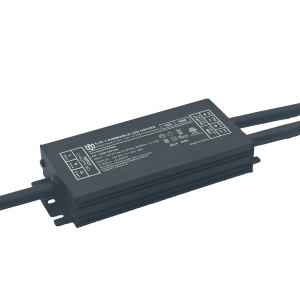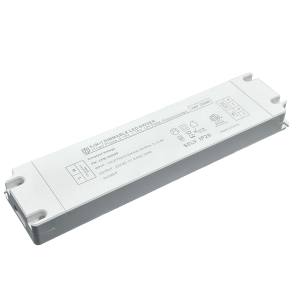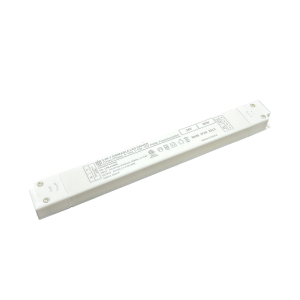The Future Outlook for Triac Dimmable Power: Trends Toward Intelligence and Networking.
The Evolution of Triac Dimmable Power Technology
For decades, triac-based dimmers have dominated residential and commercial lighting control due to their cost-effectiveness and simplicity. These semiconductor devices regulate AC current flow to adjust brightness levels seamlessly. However, as energy standards tighten globally and consumer demands surge for "smart" ecosystems, traditional standalone triac systems face obsolescence. Modern iterations now incorporate microcontrollers and communication protocols like Zigbee or Wi-Fi, transforming basic dimming into dynamic, responsive experiences. This evolution marks just the beginning of a broader paradigm shift toward interconnected intelligence.
Intelligent Integration: From Manual Control to Autonomous Systems
Today’s triac dimmers no longer operate in isolation. Manufacturers embed sensors (ambient light detection, occupancy monitoring) and machine learning algorithms to enable adaptive behavior. For instance, offices using these advanced units automatically lower illumination when natural sunlight suffices or shut off entirely during vacancy periods—reducing waste by up to 40%. Voice assistant compatibility further enhances usability; users can command scenes via Alexa or Google Home without touching switches. Such features position triac systems as central hubs within Internet of Things (IoT) architectures rather than peripheral components. Moreover, over-the-air updates ensure continuous improvement post-installation, extending product lifecycles significantly.
Networked Ecosystems: Scalability Through Protocol Standardization
A critical driver behind triac’s future relevance lies in its ability to communicate across networks. Protocols such as DALI-2 or Matter allow hundreds of fixtures to sync harmoniously under unified management platforms. Warehouses leverage this capability for zoned lighting strategies tied directly to inventory movements—dimming aisles unused at night while brightening active picking areas. Similarly, hospitality venues create mood-specific ambiances programmatically across entire properties. Crucially, edge computing minimizes latency issues common in large deployments, ensuring real-time synchronization even during peak usage hours. As buildings adopt open-source automation frameworks like Home Assistant, triac modules will increasingly serve as bridges between legacy infrastructure and cutting-edge cloud services.
Sustainability Imperatives Fuel Hardware Innovation
Regulatory pressures around carbon footprints accelerate innovation cycles. Next-gen triac chipsets prioritize ultra-low standby power consumption (<0.5W idle draw) alongside enhanced thermal management—vital for dense installation environments like server farms. GaN transistors replace silicon counterparts where applicable, slashing conduction losses by half without compromising reliability. Simultaneously, bidirectional feedback loops feed granular usage metrics back to facility managers, enabling data-driven decisions about peak shaving or load balancing. When paired with renewable energy sources (solar microgrids), these optimized circuits contribute measurably toward net-zero goals while maintaining subsecond response times for flicker-free transitions.
Cybersecurity Considerations in Connected Lighting Infrastructure
With connectivity comes risk. Each networked triac node represents a potential entry point for malicious actors seeking access to broader building networks. Industry consortia now mandate end-to-encryption encryption (AES-256 minimum) alongside regular firmware audits. Manufacturers implement hardened bootloaders preventing rollback attacks—a frequent vector exploited against poorly secured devices. Multifactor authentication adds layers of protection when configuring sensitive parameters remotely. Notably, emerging standards like TLS 1.3 ensure backward compatibility doesn’t sacrifice safety—a balance crucial for widespread adoption across critical sectors including healthcare facilities and airports.
Market Traction Signals Mass Adoption Readiness

Early adopters already validate commercial viability. Smart city pilot projects in Singapore utilize municipal Wi-Sun networks controlling streetlight arrays equipped with smart triac drivers—achieving 30% savings annually versus conventional setups. Retail giants report conversion rates exceeding 75% after retrofitting stores with intelligent dimmers capable of geofenced promotions triggered by customer proximity. Even historical monuments preserve aesthetic integrity through wireless retrofit kits avoiding unsightly wiring modifications. Analyst projections estimate CAGR exceeding 18% through 2030 as regulatory tailwinds align with falling component costs—a clear indicator that intelligent networking isn’t merely optional but inevitable for modern lighting control systems.
 A New Benchmark in Energy Sav
A New Benchmark in Energy Sav
 The Future Outlook for Triac
The Future Outlook for Triac
 The Application Advantages of
The Application Advantages of
 Innovative Design + Outstandi
Innovative Design + Outstandi
